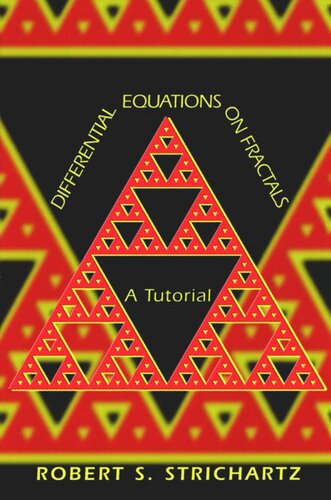

Most ebook files are in PDF format, so you can easily read them using various software such as Foxit Reader or directly on the Google Chrome browser.
Some ebook files are released by publishers in other formats such as .awz, .mobi, .epub, .fb2, etc. You may need to install specific software to read these formats on mobile/PC, such as Calibre.
Please read the tutorial at this link: https://ebookbell.com/faq
We offer FREE conversion to the popular formats you request; however, this may take some time. Therefore, right after payment, please email us, and we will try to provide the service as quickly as possible.
For some exceptional file formats or broken links (if any), please refrain from opening any disputes. Instead, email us first, and we will try to assist within a maximum of 6 hours.
EbookBell Team

4.4
22 reviewsDifferential Equations on Fractals opens the door to understanding the recently developed area of analysis on fractals, focusing on the construction of a Laplacian on the Sierpinski gasket and related fractals. Written in a lively and informal style, with lots of intriguing exercises on all levels of difficulty, the book is accessible to advanced undergraduates, graduate students, and mathematicians who seek an understanding of analysis on fractals. Robert Strichartz takes the reader to the frontiers of research, starting with carefully motivated examples and constructions.
One of the great accomplishments of geometric analysis in the nineteenth and twentieth centuries was the development of the theory of Laplacians on smooth manifolds. But what happens when the underlying space is rough? Fractals provide models of rough spaces that nevertheless have a strong structure, specifically self-similarity. Exploiting this structure, researchers in probability theory in the 1980s were able to prove the existence of Brownian motion, and therefore of a Laplacian, on certain fractals. An explicit analytic construction was provided in 1989 by Jun Kigami. Differential Equations on Fractals explains Kigami's construction, shows why it is natural and important, and unfolds many of the interesting consequences that have recently been discovered.
This book can be used as a self-study guide for students interested in fractal analysis, or as a textbook for a special topics course.